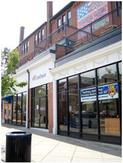Planning for Sustainable Communities
Background
As part of its commitment to smart growth, the State of Maryland adopted the Sustainable Communities Act of 2010. This legislation combines a variety of state programs, such as Community Legacy and Designated Neighborhoods, under the umbrella of the Sustainable Communities (SC) program. The Act also mandates coordination of State grant, loan, and tax credit investment tools in a targeted way to help revitalize Maryland’s older communities.
For municipalities like Baltimore, this program means added support for strengthening redevelopment initiatives, stimulating the local economy, and creating job opportunities in the Region to help reduce the City’s unemployment rate. Under the Sustainable Communities program, the Department of Planning is coordinating Baltimore’s application to the MD Department of Housing and Community Development (DHCD) for designation, by strategically identifying geographic areas as Sustainable Communities.
DHCD has been very clear that each jurisdiction’s application must be focused on specific communities, that meet criteria laid out in the program guidelines and that correspond to local priorities and strategies. Areas within the designated and approved Sustainable Communities boundary will benefit from priority access to certain state funding and incentive programs.
Based on the requirements of the program, some areas are automatically included in the SC area, including: Base Realignment and Closure (BRAC) Zones and State designated Transit Oriented Developments (TODs). It is up to each municipality to designate other areas for inclusion in its Sustainable Community area.
 Designation Process
As part of the application process, the Department of Planning formed a work group to guide the development of the Action Plan and its implementation.
The work group, which includes members representing City Agencies,
nonprofit organizations, and foundations, has met regularly over the
past few months to develop the Sustainable Communities’ vision and
strategies to achieve it.
|
The group also identified programs, policies and initiatives that can be implemented as part of the SC Action Plan.
Baltimore’s designated SC area is based upon the Action Plan, the areas baseline conditions (e.g., physical assets, coordination of investment, economic conditions), and the needs and potential for these areas to respond to the strategies outlined below. The Action Plan is intended to serve as a framework for investment and coordination of public, private and non-profit investments that seek to revitalize the SC areas.
The City’s overall Sustainable Communities goals are to:
- Enhance the City’s economic competitiveness, inclusiveness and workforce development;
- Build upon existing strengths, assets and amenities;
- Support transportation efficiency and access;
- Promote access to affordable housing; and
- Leverage and coordinate policies and investments.
To achieve these goals, the Baltimore SC work group identified six targeted strategies:
- Support Main Streets and commercial areas by targeting investments in Middle Market Neighborhoods.
- Target investments in Healthy Neighborhood areas.
- Target investments along major transit routes.
- Target investments in arts and entertainment districts.
- Invest in areas surrounding anchor institutions and major redevelopment areas.
-
Facilitate investments in emerging markets near areas of strength.

Public Comments Wanted
Baltimore City’s Sustainable Communities action plan will be available for a two-week public comment period from May 14
- 28, 2012. Please use this link to review and provide comments.
Feedback received during the public
comment period will be reviewed and considered for incorporation into the final
Application. The City of Baltimore plans
to submit its Sustainable Community proposal by the Round 3 DHCD deadline of
July 2, 2012.
Upon approval, Baltimore
Housing will take the lead in administering the Sustainable Communities
program, with participation from the established work group.
|